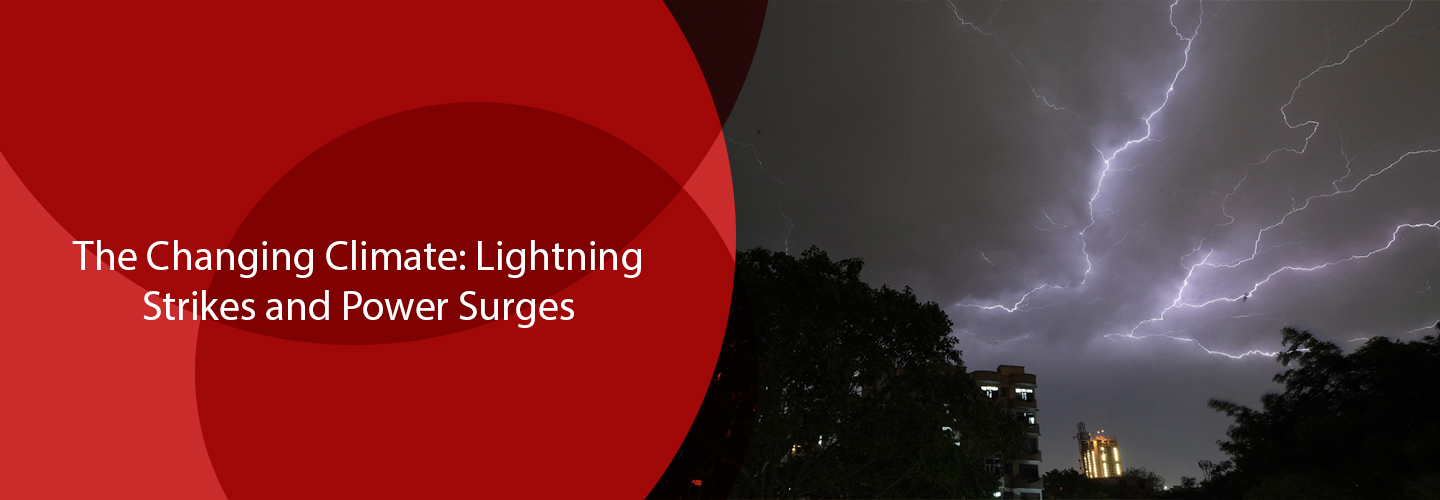The Changing Climate: Lightning Strikes and Power Surges

Home safety is essential during climate catastrophes, and with increasing global warming, our climate keeps changing, leading to an increased number of hurricanes, floods, and thunderstorms than usual. To protect yourself, your family, and your home, investing in a lightning rod is one solution.
First of all, let’s address the question of what a lightning rod actually is. A lightning rod is a metal rod that is placed on the top of your house. It is an electrical conductor, which ‘in English’, as we would say, means it can absorb electricity. During thunderstorms, the rod will absorb the electrical charge formed through a lightning strike and provide it with a direction towards the ground, thus ‘grounding the charge.’ This means that when lighting hits, the rods will absorb the electrical voltage and provide it with a safe pathway into the ground so that it does not transfer into the home. Installing a lightning rod does not mean your house is no longer likely to be hit with lightning; rather, if it does get hit, the rod will simply prevent any damage from occurring and ground the charge.
Why is it important to install a lightning rod?
As explained above, it is important to protect your home, the people, and any electronics present inside from severe damage. Damage from a lightning strike can lead to serious effects on a person’s health, sometimes proving to be fatal. Furthermore, when lightning hits the roof of a house or a nearby electric pole, it doesn’t only damage the structure physically but can also cause fires, electrical shortages, and power surges. These in turn damage electrical appliances and create a huge, abrupt financial burden on the residents.
If, by chance, a bolt of lightning strikes a person, there are high chances that such an instance can leave the person with permanent health issues. According to the National Weather Service, lightning is one of the major causes of all kinds of storm-related deaths in the US. According to the NWS storm data, an average of 43 people in the US have died per year as a result of a lightning strike in the years between 1989 and 2018. In the last 10 years, from 2009 to 2018, an estimated 243 people have been severely injured due to lightning strikes, and an average of 27 individuals have died.
The injuries caused by a lightning strike include muscle pains, cardiac arrests, hearing loss, concussions, burns, and seizures. More often than not, a cardiac arrest because of a lightning strike can eventually lead to the death of an individual. Additionally, those who survive through things such as cardiac arrests are known to have also suffered irreversible brain damage. As stated in the National Weather Service, ten percent of those that are struck by lightning have been known to die, whereas ninety percent are injured with serious injuries that lead to various degrees of disability in the individual.
Power Surges
Power surges are a very common result of lightning strikes; due to the changing climate, hurricanes and thunderstorms have been frequent. During such weather conditions, there is bound to be lightning around the area; thus, power surges can occur and sometimes multiple ones, which can prove to be quite detrimental to any electronics plugged into or connected to the home wiring.
Power surges are unpredictable spikes in voltage, mostly caused by factors like lightning, faulty wires, power breakdowns, and overloaded power circuits, that can easily cause immediate or even gradual damage to almost all electrical appliances and devices that may be connected to a power unit.
As reported by the Washington Post, there has been an increase in climate change that has also led to a significant increase in all kinds of climate disasters. These climate disasters will continue to have a prominent impact on power outages, which may lead to frequent power surges and considerable damage to appliances and electrical devices in most American households. Similarly, the weather changes have had a detrimental effect on the old and aging electrical systems across the nation. In 2020 alone, the average American household was in total blackout for what is known to be more than eight hours, which is five times more than the power outage time faced by Americans in 2015.
How to Prevent Damage During a Climate Disaster
There isn’t much that can be done to reverse any weather forecast or to stop power surges from occurring entirely, but there are ways to minimize the damage and protect yourselves. The most that individuals can do is install a lightning rod in the event of a lightning strike to prevent the electrical charge from affecting your home, anybody, or anything around.
Additionally, it should be a general habit for individuals to unplug electrical devices connected to a power outlet when they aren’t in use. By doing so, if ever a power surge occurs, it will not affect the devices. Another protection method from power surges and lightning catastrophes is subscribing to a surge coverage plan. These can be as low as $8.99, as provided by FirstEnergy, and provide insurance for any devices damaged because of a power surge; it covers the cost of repairs and replacements if necessary.
Time and again, environmentalists have warned against the dangers of climate change, and it looks like we’re living with it. Lightning strikes can result in power surges, and while both can be severely damaging and dangerous to people and homes alike, there are ways to minimize the damage as well. We hope this article was a good read on how the two phenomena can affect your homes and how you can control the extent of the damage as well.
